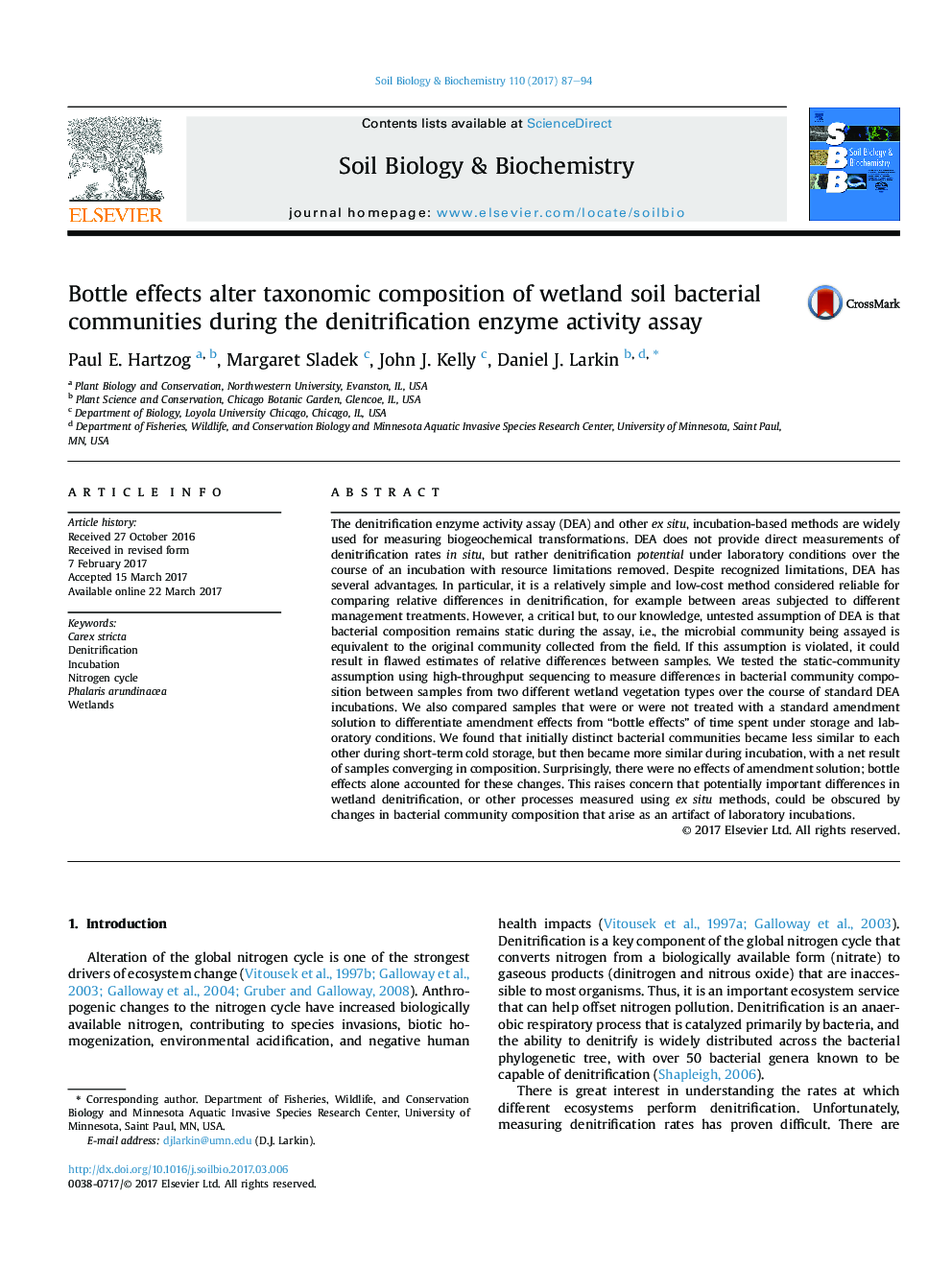| Article ID | Journal | Published Year | Pages | File Type |
|---|---|---|---|---|
| 5516402 | Soil Biology and Biochemistry | 2017 | 8 Pages |
â¢DEA and other incubation methods are widely used to study nutrient transformations.â¢We tested assumption that microbial communities do not change ex situ.â¢Microbial communities changed with cold storage and during incubation.â¢Change was driven by ex situ environments, not an amendment solution.â¢DEA may not accurately reflect ecological differences in denitrification.
The denitrification enzyme activity assay (DEA) and other ex situ, incubation-based methods are widely used for measuring biogeochemical transformations. DEA does not provide direct measurements of denitrification rates in situ, but rather denitrification potential under laboratory conditions over the course of an incubation with resource limitations removed. Despite recognized limitations, DEA has several advantages. In particular, it is a relatively simple and low-cost method considered reliable for comparing relative differences in denitrification, for example between areas subjected to different management treatments. However, a critical but, to our knowledge, untested assumption of DEA is that bacterial composition remains static during the assay, i.e., the microbial community being assayed is equivalent to the original community collected from the field. If this assumption is violated, it could result in flawed estimates of relative differences between samples. We tested the static-community assumption using high-throughput sequencing to measure differences in bacterial community composition between samples from two different wetland vegetation types over the course of standard DEA incubations. We also compared samples that were or were not treated with a standard amendment solution to differentiate amendment effects from “bottle effects” of time spent under storage and laboratory conditions. We found that initially distinct bacterial communities became less similar to each other during short-term cold storage, but then became more similar during incubation, with a net result of samples converging in composition. Surprisingly, there were no effects of amendment solution; bottle effects alone accounted for these changes. This raises concern that potentially important differences in wetland denitrification, or other processes measured using ex situ methods, could be obscured by changes in bacterial community composition that arise as an artifact of laboratory incubations.
